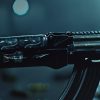Setup and Optimization of Tarkov in Patch 0.14
Welcome to our guide on setup and optimization of Tarkov in Patch 0.14! As the game evolves and receives updates, it’s crucial to ensure that your setup is optimized for the best possible performance and gaming experience. In this guide, we’ll walk you through the steps to fine-tune your settings, maximize performance, and make the most out of the latest patch in Escape from Tarkov. Whether you’re a seasoned player or just diving into the game, optimizing your setup can significantly enhance your gameplay and immersion. Let’s get started!
Setup and Optimization of Tarkov in Patch 0.14
Graphics

1. If possible, opt for full-screen mode as it can significantly boost FPS. Texture quality surprisingly affects the smoothness of textures and can heavily impact your computer’s workload, so adjust it lower if your system is weaker.
2. Shadow quality is an interesting one. Lower settings burden the CPU more, while medium ones strain the video card. Given that the game relies more on the CPU, setting it to medium is recommended.
3. Detail affects the appearance of bushes and the rendering range of other players. It can heavily tax your computer, so if your CPU is weak, consider lowering it.
4. Keep general visibility below 1000; anything beyond that isn’t necessary.
5. Antialiasing is important to prevent jagged edges on textures. TAA is preferred, although FXAA is lighter on the computer but not as effective.
6. Resampling is for those with high-end systems. If you have a powerful setup, you can increase it to 2x or 4x for clearer graphics, but be prepared for a heavy system load. Conversely, reducing resampling can make the game look blurry.
7. DLSS and AMD FSR are both handy tools. If you have an Nvidia GPU, DLSS is the way to go. For instance, without DLSS, your FPS peaked at 135. With DLSS set to Balance mode, it reached 139, and with Quality mode, it hit 143. If you’re using an AMD card, we suggest trying FSR 2.2. It’s more refined. Even if you have an Nvidia GPU, setting the preset to Quality can improve FPS without sacrificing much in terms of visuals. HBAO is shadow volumetrics, which can enhance the picture, but it can also strain your system, so we recommend turning it off.
8. SSR, or screen-space reflections, adds visual appeal without much impact on performance, so you can consider turning it on.
9. Unisotropic filtering, on the other hand, doesn’t affect performance much, but it doesn’t add much value either, so we prefer to turn it off.
10. NVIDIA Reflex Low Latency theoretically reduces response time, but we haven’t noticed much of a difference. The only benefit I found was enabling the plus-boost to remove the FPS limit while gaming.
11. Sharpness enhances image sharpness, while High Quality Color improves colors without impacting performance. Z Blur, or motion blur, should be turned off as it can detract from the gaming experience.
Game

1. Automatically RAM Cleaner. We recommend turning it on. Using only physical cores is very individual. So it’s better to check specifically with yourself how it will work. Field of view is an individual preset. Responsible for your field of view in the game. Make sure you turn on the malfunction alarm so that when your gun jams, the screen lights up red.
2. Intermediate trading screen is for olds who are more comfortable using traders like this. Quick access, stamina and posture, health status. We see three presets. Always hide, nothing will be highlighted, automatically only as needed, that is, got wounded – saw where.
3. Health highlighting comes in color and monochrome, see the difference. Check available actions, turn on highlighting everything, very useful, you will see where you can shove this or that item when you take it in your hands. Using an item with a double click we did not change the setting, just keep in mind that you do not need to double click on the moonshine. When you use postfix, know that it is luma sharpening and second sharpening that cuts your fps the most.
4. Another important point is the swap file. If you have 16 gigabytes of RAM, you’re unlikely to go outside without it. We recommend almost everyone to put it at least 25 gigabytes. Preferably on an SSD and preferably without a game installed there. But if it is installed there, what can you do? Use the search engine to find the system performance settings. In the window that opens, go to the “Advanced” tab. In the “Virtual Memory” box, click “Change”. Uncheck the automatic selection box. Select the disk and specify the desired size for the swap file based on your system’s RAM capacity. For instance, if you have 32 gigabytes of DDR5 RAM, adjust the swap file size accordingly.
Enable the XMP profile in the BIOS to enhance RAM performance. To check if it’s enabled, open Task Manager, navigate to the second tab, and check the RAM frequency. If it’s at 2133 or 2666, the XMP profile is likely disabled.
To enable the XMP profile, access the BIOS and follow guides available online. Don’t worry about security concerns; in the worst-case scenario, your computer won’t start, but you can reset the BIOS by removing and reinserting the motherboard battery.
Ensure sufficient free space in your drives to avoid performance issues caused by clutter. Clean temporary files by pressing Windows + R, typing “%temp%”, and deleting the contents of the folder. Additionally, clear the cache and logs in the Tarkov Launcher.
In conclusion, optimizing your system for Escape from Tarkov in Patch 0.14 can greatly enhance your gaming experience. By following the steps outlined in this guide you can achieve smoother gameplay and minimize lag. Remember to stay updated on future patches and optimizations to continue enjoying the game at its best. Happy gaming!







